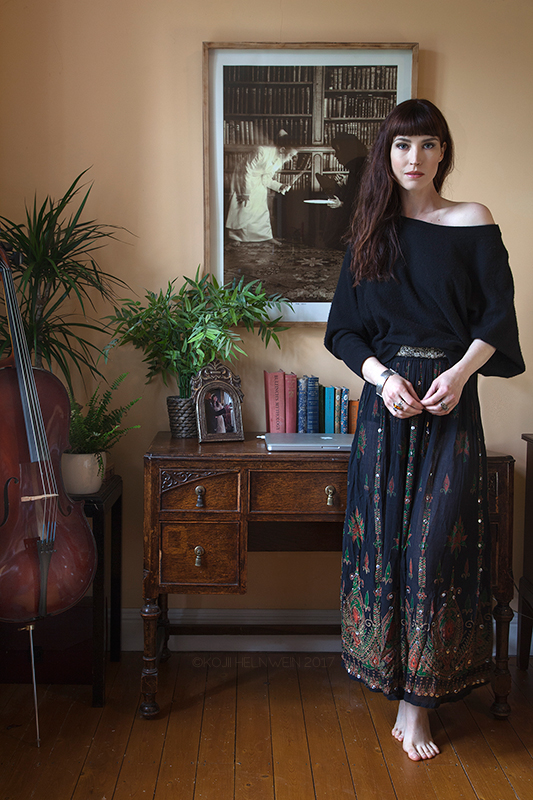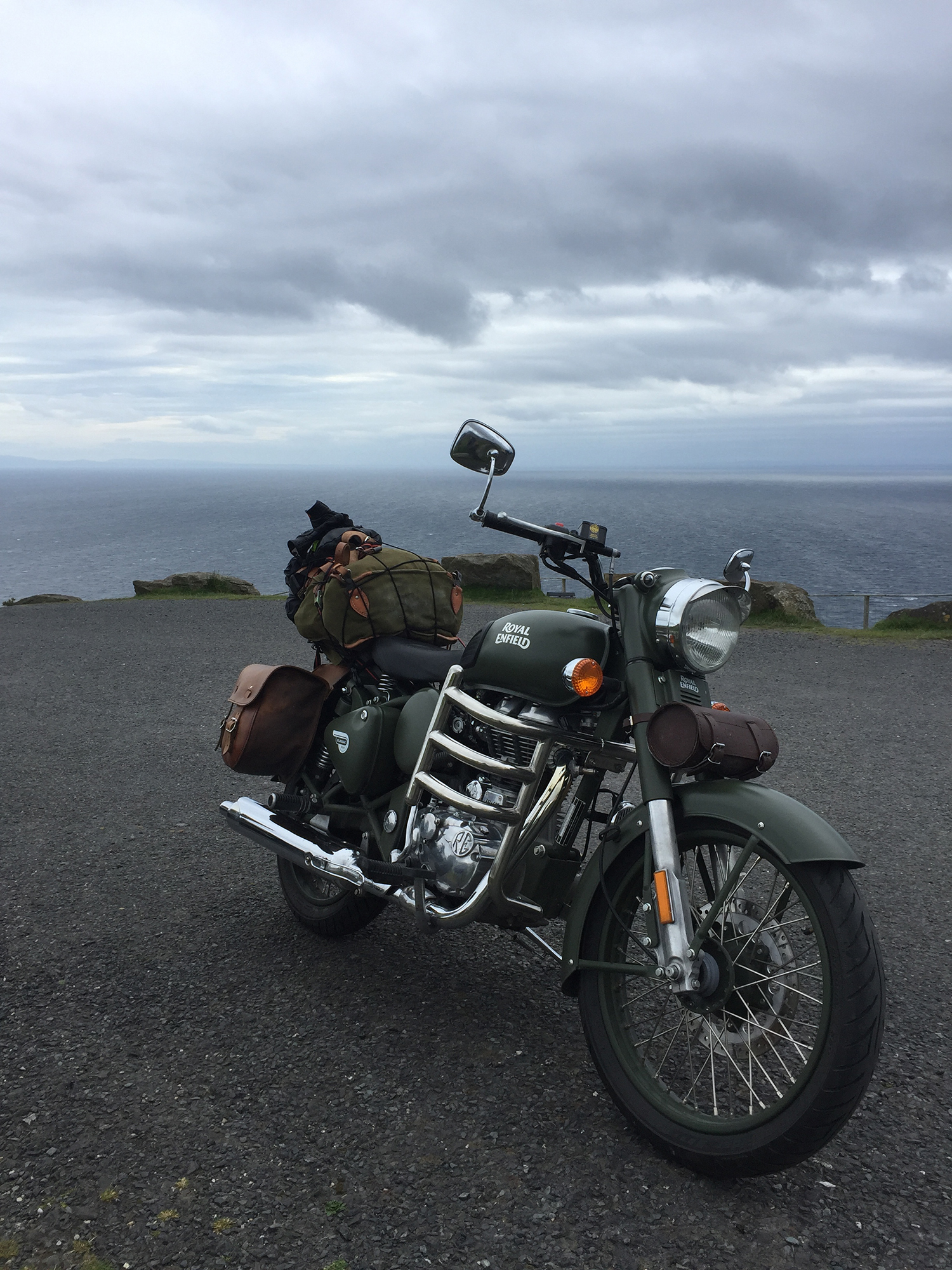Thank you so much to Deirdre McQuillan at the Irish Times for this lovely piece about our home.
At home in an Irish castle
with Kojii Helnwein
The model turned actor on her favourite things: a bedside table and her beloved motorcycle
Sat, Sep 23, 2017, ORIGINAL ARTICLE HERE
Actress, singer and songwriter Kojii Helnwein was born and raised in Tallaght but now lives in a castle in Tipperary with her fine art photographer husband, Cyril Helnwein and their three children. The daughter of Enda Wyatt, co-founder of Irish rock band An Emotional Fish, she has had a lifelong affair with music and the arts. Having studied technical stage and production, she worked as a freelance stage manager in Irish theatres for four years, then briefly with a circus in Paris before moving to Los Angeles and beginning a career in modelling and acting. She has walked for designers such as Jimmy Choo and Prada, appeared in countless magazines including Vogue, Cosmopolitan, Elle and Marie Claire and on TV on Project Runway and Models of the Runway. She and Cyril are hosting a charity motorcycle run [The Distinguished Gentleman's Ride] in Tipperary for Movember tomorrow, Sunday, September 24th.
Describe your interiors style:
KH: Living in a castle from the 1800s it is kind of hard to do anything modern here, so everything is very vintage, bohemian, simple and organic. Textures and lighting are very important for me and I love natural fabrics like linen and fresh cotton. I like to bring the outside in, so there are a lot of wooden floors, cabinets and counter-tops. I don’t like anything plastic. Moroccan interiors are my ideal style and I love Dar Sol, the Irish store founded by Daniel Holfeld, the photographer who has sourced wonderful handmade items from Morocco.
What room do you most enjoy?
KH: It used to be the kitchen, but now it is our new little guest room which we call the "Tree House". It is actually an attic room that was renovated: it’s a little triangular room at the top of the house with only a bed, a Moroccan carpet and a shelf with a lot of art books and vintage cameras. It gets all the daylight and is the only room in the house where people don’t go looking for me. I have three kids so it is a nice place to meditate or play my guitar and no one ever finds me there so it is lovely.
What items do you love most?
KH: I love the bath shelf that my husband Cyril made for me – he is very handy with woodwork – from reclaimed wood from our property. It holds a wine glass, a book or an iPad. My Royal Enfield Classic 500 [motorcycle] is my pride and joy; I bought it in Adare in Limerick last March. [Royal Enfield Ireland]. Other items would be a hand-carved closet which came with the castle with beautiful leaves and creatures – it is stunning. And a bedside table that my 11-year-old daughter made from tree trunks and twine. It is so natural, beautiful and simple.
Who are your favourite designers?
KH: I am not interested in current designers mainly because modern furniture design doesn’t fit into the house, so I go to flea markets, auction houses, thrift and vintage stores. I search for things that have an older style of craftsmanship. And most of my clothing is vintage too.
What artists do you admire?
KH: I am fortunate to be surrounded by artists, so obviously my husband is my favourite artist especially his latest series of Polaroid prints called Lost Garden. He shot it in our own arboretum and made all the frames from reclaimed wood. My father-in-law’s hyper realism [the Austrian artist Gottfried Helnwein] floors me – he can capture the essence of a person so well. I also admire the London-based New Zealand artist Justin Russell. He was based in Dublin for many years as a tattoo artist and tattooed my husband, he is another hyper realist, super-talented with a great depth to his art.
Biggest interior turn off?
KH: Low ceilings, clutter, shiny modern surfaces, bad lighting, black shiny 1980s-style kitchens, black leather couches and lino.
Destination that stands out?
KH: Joshua Tree, out in the desert. It was the first place we went to after my daughter was born – she was born at home in our loft in Los Angeles and was just three days-old when we left. My family had been over from Ireland for the birth which was five days before Christmas. DTLA is high rise, smog, noise and dirt and we wanted to get out of it into wide open spaces. My dad had shot a music video in Joshua Tree and suggested the idea, so we rented a huge Ford Expedition and shot off.
If you had €100,000 to spend on anything for the home, what would that be?
KH: Oh my God, living in a house that is constantly under restoration, I would renovate an attic space above our wing so we would have extra bright spaces. If there was anything left, I would build a small climate-controlled shed for the motorcycles.
kojiihelnwein.com, cyrilhelnwein.com
all photos ©Kojii Helnwein 2017








